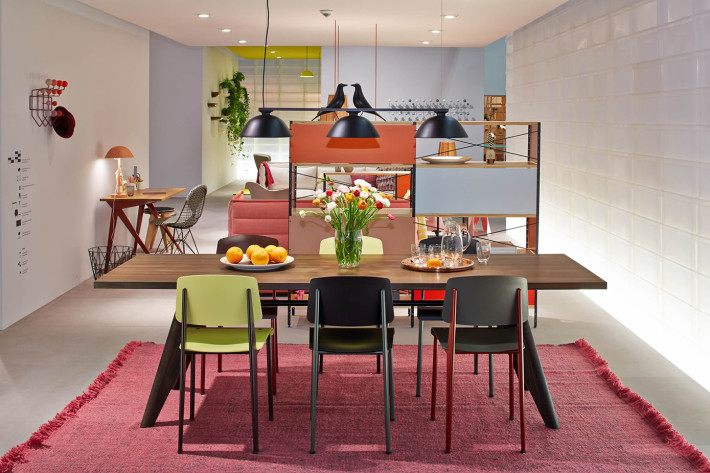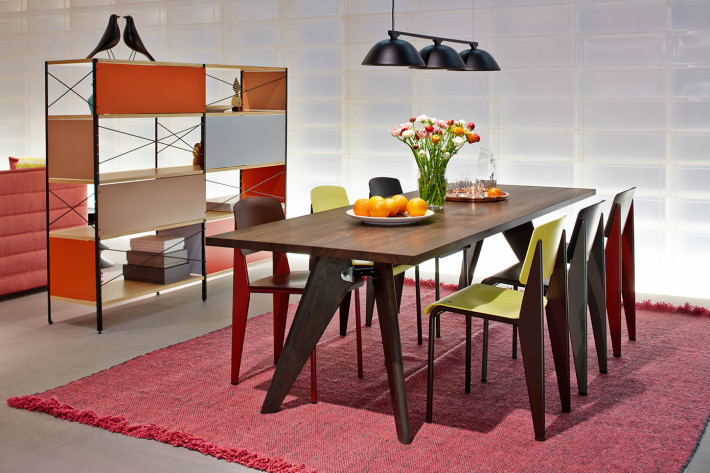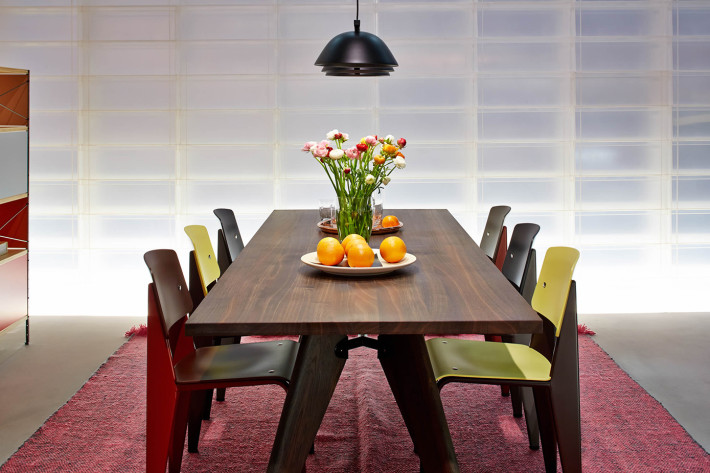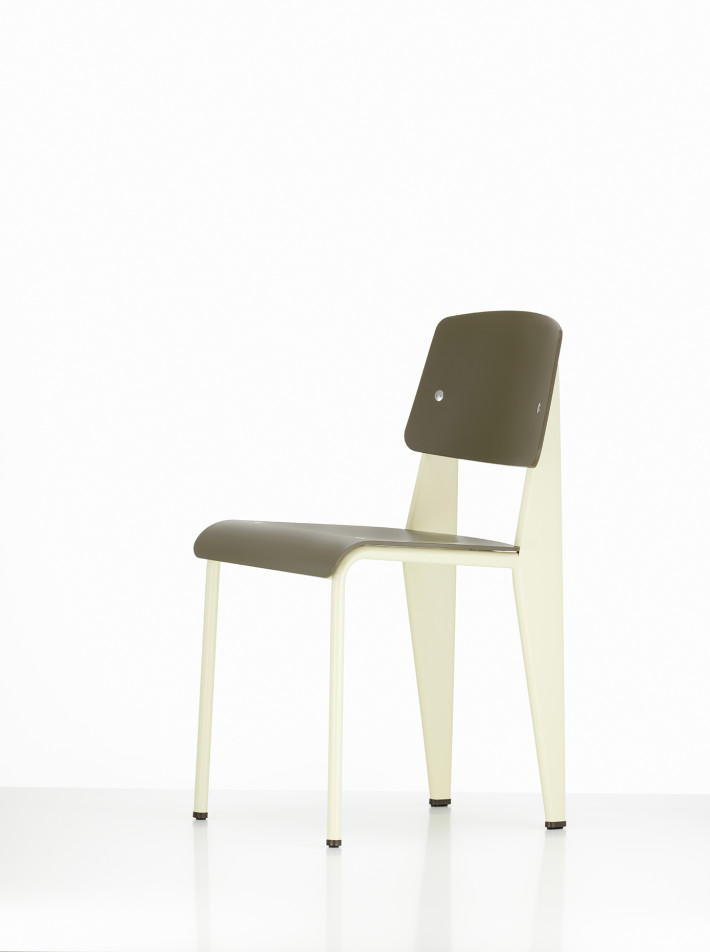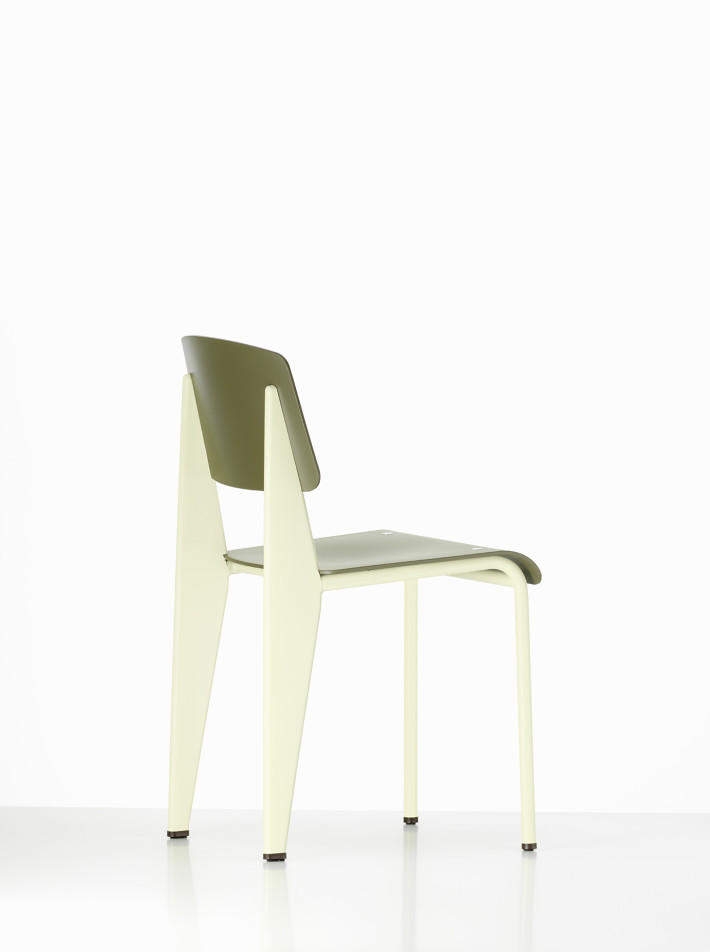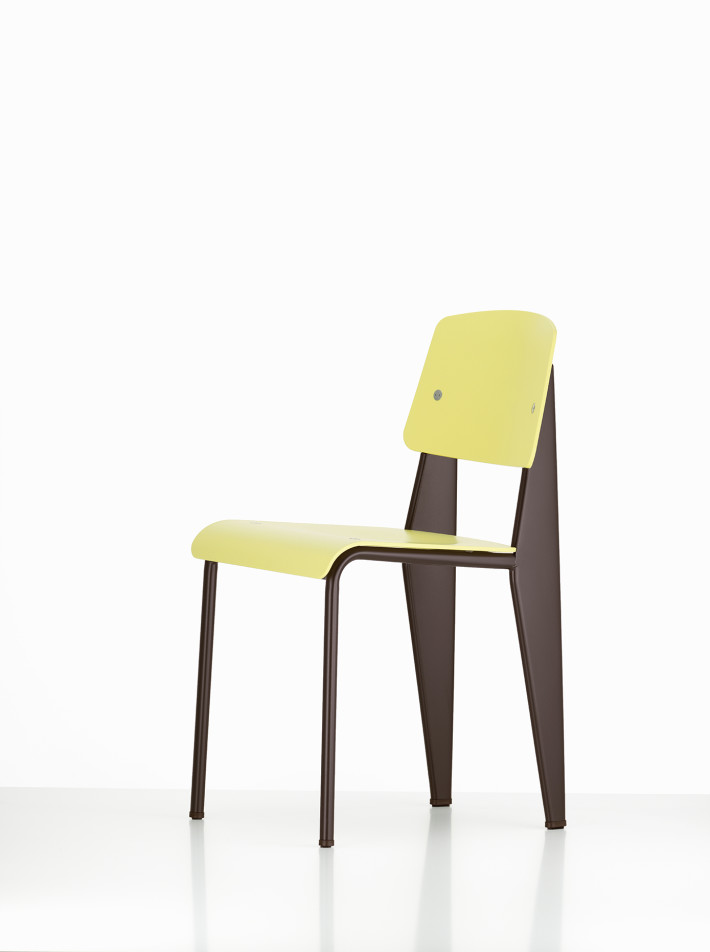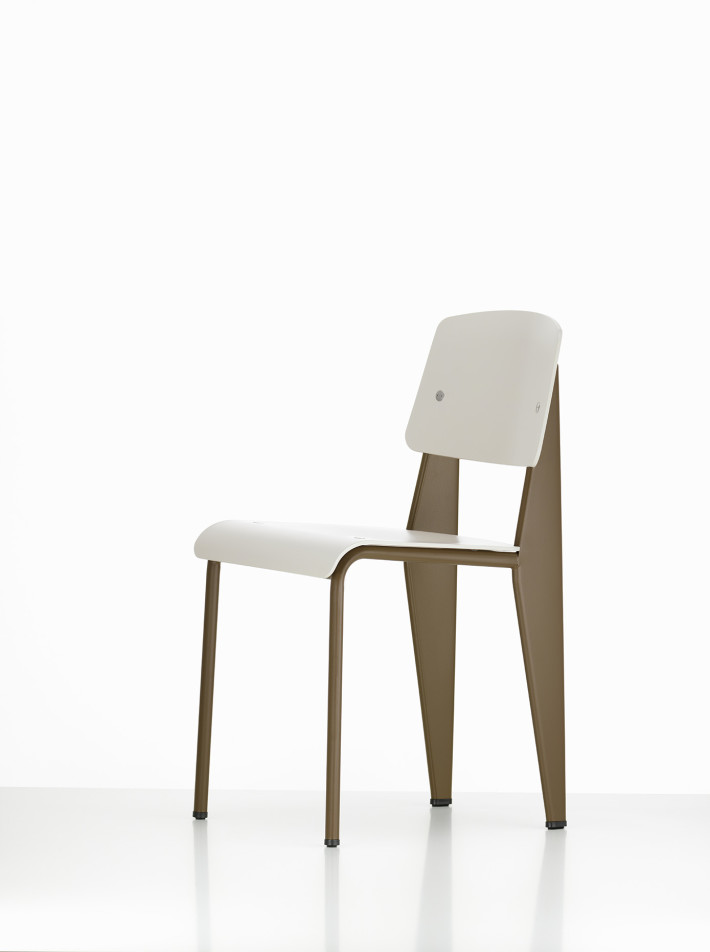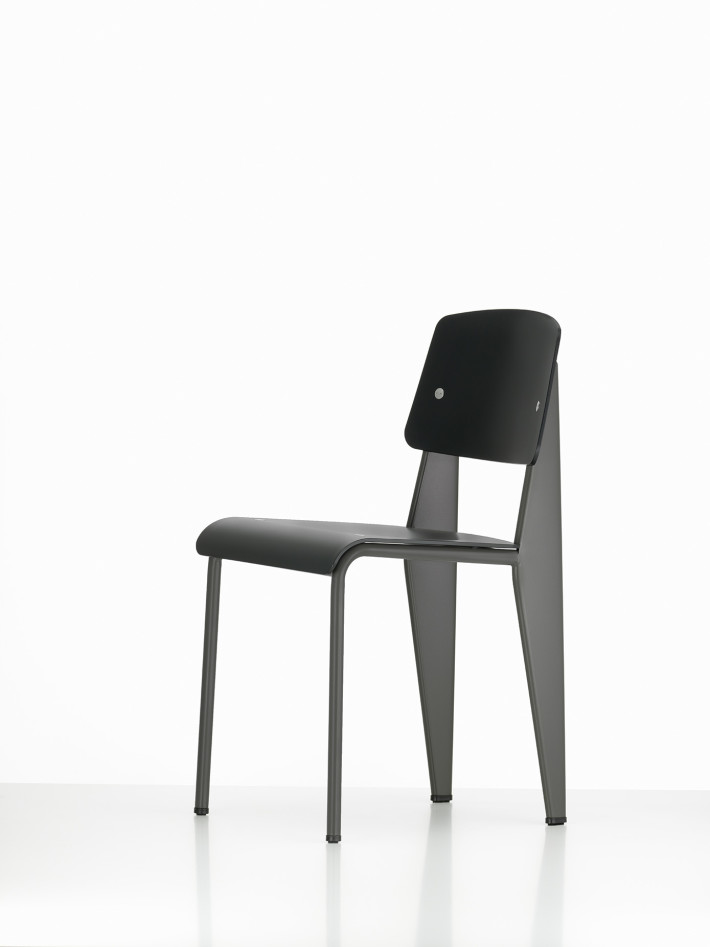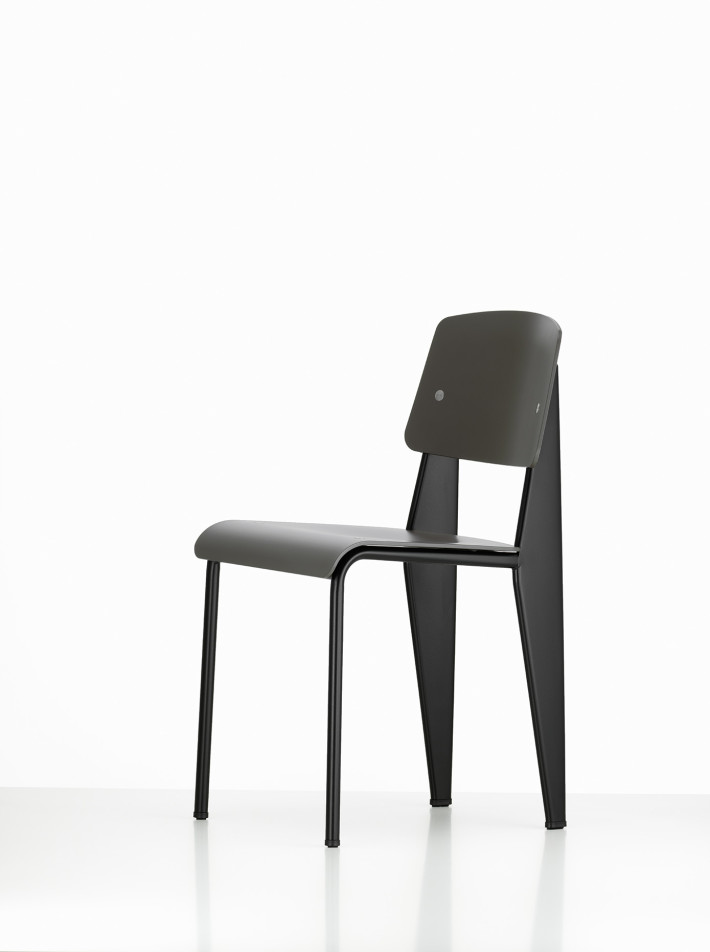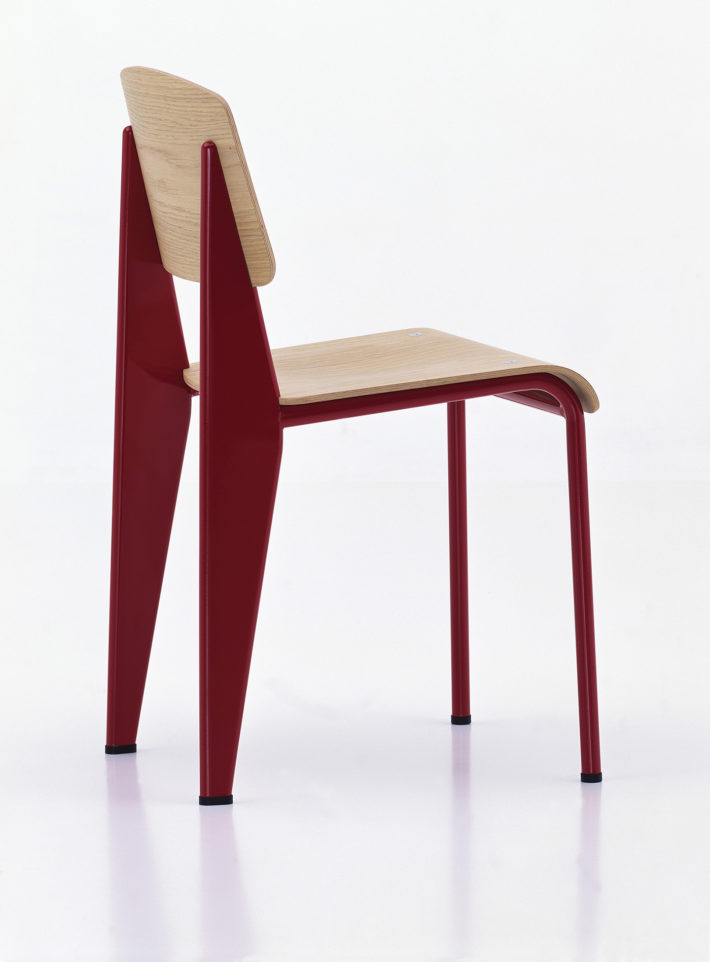28 April 2016
Why does a chair have to have four identical legs? If we think about the way the weight is distributed on our buttocks, the habit of giving all its supports the same shape does not appear very logical. The back legs, in fact, have to withstand heavier loads than the front ones. It was out of this reflection that the profile of the Standard was born: one of the most famous chairs of the 20th century, it was designed by Jean Prouvé (1901-84) around 1934 as a model for the office and then reinterpreted over the years, culminating in the current version produced by Vitra. At the time the great constructeur, initiated into the art of metalworking by teachers like Émile Robert and Aldabert Szabo, had recently become a member of the Union of Modern Artists, along with Le Corbusier, Pierre Jeanneret and Charlotte Perriand, and was carrying out radical experiments in which architecture, design and industry were treated as equals, as aspects of a single discourse. It is no coincidence that for the back legs Prouvé used the unmistakable section in the shape of an elongated triangle that was to become the structural characteristic of many of his pieces of furniture, constructions and prefabricated houses. The element resembles a Gothic buttress, so solid that it underlines the slenderness of the other parts: two thin panels of bent wood and a pair of steel tubes that are extensions of the main structure, serving first as frame and then as front supports. They look so frail in comparison with the supports at the back that the designer seems to have been obliged to make the seat slope upward, exploiting the bend to give—to the eye, above all—a sense of greater security. The result is a notable disproportion, a piece of metalwork very distant from the classical harmony with which Le Corbusier was translating the world of machinery into form in the same years. In contrast to much of the metal furniture of the period, the Standard was born in the workshop and did not follow the fashion of the moment: it is not light, it is not cantilevered, it doesn’t glitter. It is almost a caricature in its effort to take observation of the stress diagram to extremes, and is brazen in flaunting its industrial nature and mechanical origins. And yet there is no digression nor superfluity in the overall effect, in part thanks to the contrast in color between structure and bearing surfaces—which results in a clear hierarchy of the parts. After the first version, the Standard has undergone several modifications, with changes in the materials and the links between the components: in particular—as in all Prouvé’s work—a fundamental role is played by the points of connection, the joints, the screws and bolts: devices able turn a series of individual pieces into a universal system of construction.
